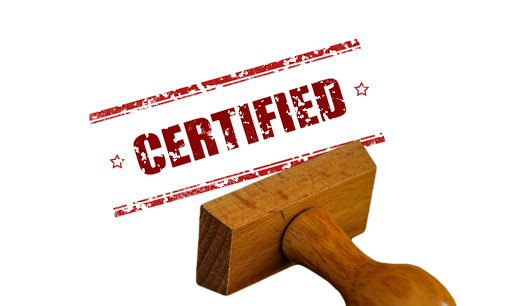With competitiveness increasing in every industry, delivering consistent quality of products and services is essential. ISO 9001 is a globally recognised standard for Quality Management Systems (QMS) that provides frameworks for businesses to meet customer requirements and improve internal processes.
Getting ISO certified is more of a strategic decision that shows a company’s commitment to excellence and reliability. With ISO 9001, a business can streamline operations and reduce redundancies for better customer satisfaction. Whether it is a start-up or a global enterprise, these certifications strengthen trust among stakeholders.
A quality culture is created within an organization, empowering employees to contribute to innovation. Read on to learn how the latest QMS software and an ISO certificate can elevate a brand and position a business for long-term growth.
Understanding QMS
A Quality Management System (QMS) is an organized framework that helps a company control and improve the quality of its products or services. It includes all the policies, procedures and processes required to ensure that everything runs smoothly to maintain quality standards.
QMS includes 4 main components essential for a business:
- Quality Control Planning is needed to identify relevant quality standards. Timely outlining processes and assigning roles at the right time make a quality management system more effective.
- Quality Control is essential for inspecting and testing products to detect deviations from standards. Checklists, control charts and statistical methods ensure and enable corrective standards.
- Quality Assurance ensures that quality maintenance operations are built into every stage of production or service delivery. Timely audits, process evaluations and streamlined documentation help prevent issues.
- Quality Improvement aims to enhance quality consistently. The aim is to identify inefficiencies, reduce wastage and implement innovative solutions. This adds to the overall organizational performance over time.
Key Requirements of QMS
- A quality management system must offer flexible configuration, branding alignment and insightful reporting to support continuous process improvement.
- QMS must integrate seamlessly with other existing systems. This will ensure efficiency and scalability across facilities, suppliers and customer networks.
- A QMS software must be user-friendly and update automatically. This is essential for savvy vendors who understand specific business goals and want to ensure growth.
Who needs QMS?
Any organization aiming for consistency can benefit from a QMS. With QMS software, high-quality products and services can be delivered. However, for small businesses and organizations, QMS software ensures uniformity and operational clarity. The system and the software help manage complex operations and ensure compliance with industry regulations.
Importance of Certification for Businesses in 2025
Here are a few reasons for adopting the best quality management systems, QMS software and getting your business ISO certification:
Need for Quality Management System
- A documented QMS boosts customer confidence, ensures complete regulatory compliance and promotes operational efficiency. Quality assurance is an essential component of running a business which is possible through automation of processes.
- QMS helps streamline processes and reduces the wastage of resources. With proper documentation, errors are reduced and guesswork is eliminated. Redundant tasks are minimized which improves productivity and helps in better customer satisfaction.
- Proactive recognition of risks and timely mitigation helps the management to address potential issues. With QMS, operational defects and non-conformities can be avoided. This helps in maintaining brand reputation and avoiding operational setbacks.
Asset management under QMS ensures that records for regulatory standards are maintained at all times. This helps in optimizing investment returns and maintaining infrastructure for consistent results.
- Training management is another advantage of QMS. The system supports staff training, and maintenance costs of existing processes are lowered. This drives performances consistently and ensures long-term success.
Need for ISO 9001
- Implementing ISO 9001 for quality management enhances corporate image and strengthens market positioning by providing a competitive edge. This aids in building a positive image for customers and stakeholders.
- Having ISO 9001 reduces warranty and liability claims through defect minimization and streamlines documentation, aiding potential litigation.
- With an ISO 9001, fewer second-party assessments are required. Traceability to the root cause of quality issues also gets better. With independent and professional verification, trust strengthens which helps meet growing buyer demands.
- Responsibilities and roles of employees are clearly defined which ensures accountability. Errors in the system are identified at the right time which prevents the recurrence of the same issues and promotes continuous improvement across operations.
Conclusion
ISO 9001 certification offers tangible benefits that go beyond regular compliance. The certification demonstrates an organization’s commitment to delivering high-quality products and services. With a structured QMS, businesses manage risks and can scale accordingly. Certification also provides a competitive edge when bidding for contracts or when expanding into new markets. Using the latest QMS software is an indispensable investment in a company’s future which ensures sustainable success. When combined, a quality management system and an ISO certificate promise excellence across every level of an organization.
Frequently Asked Questions (FAQs)
- 1 Which are the three major industries that benefit the most from QMS?
Answer: Healthcare, manufacturing and construction are the main industries that benefit from a quality management system. However, adopting a quality management system depends on specific business goals and the size of an organization.
- 2 Which are the most common QMS frameworks?
Answer: ISO 9001:2015, ISO 13485, ISO 15189, ISO/TS 16949, ICH Q10 and AS9011 are the most commonly adopted QMS frameworks. However, there are other standards for environmental safety and occupational health and safety of employees for various organizations.
- 3 What comprises a good Quality Management System?
Answer: Customer-focused processes, process-oriented activities that ensure evidence-based decision-making and operations ensuring consistent improvement comprise a good QMS.
- 4 How is a good QMS implemented?
Answer: The process starts with understanding organizational goals, allocating required resources and turning it into a company culture. A QMS software is essential to automate processes and ensure regulatory compliance.
- 5 How to check the implementation of QMS?
Answer: Plan, do, check and act is the best way to implement QMS. Planning aligns quality with business goals; doing involves execution and staff training; checking helps identify gaps in operations whereas acting focuses on corrective actions fostering consistent improvement.
- 6 What are the principles of ISO 9001:2015?
Answer: Customer focus, leadership, engagement of people, process-based approach, consistent improvement, evidence-based decision-making and relationship management are the main principles of ISO 9001:2015.

